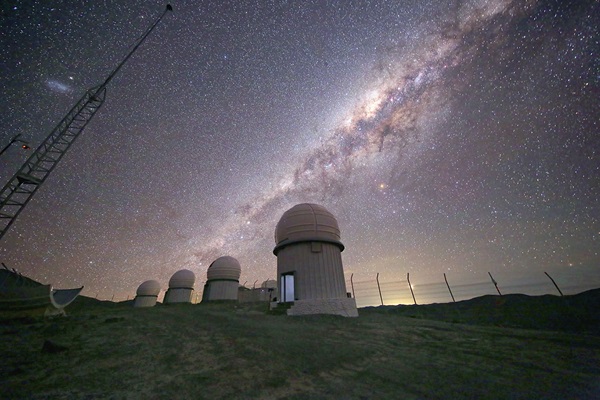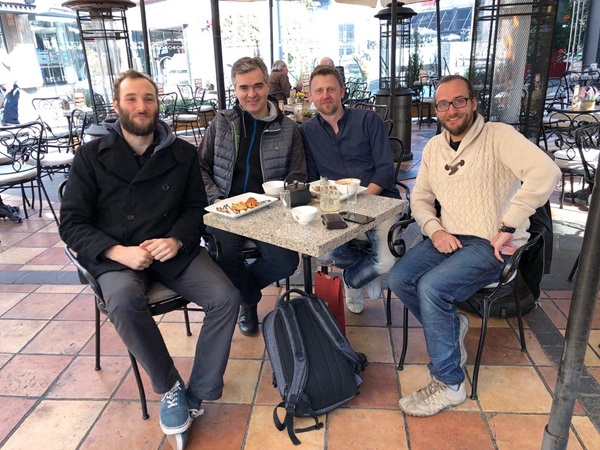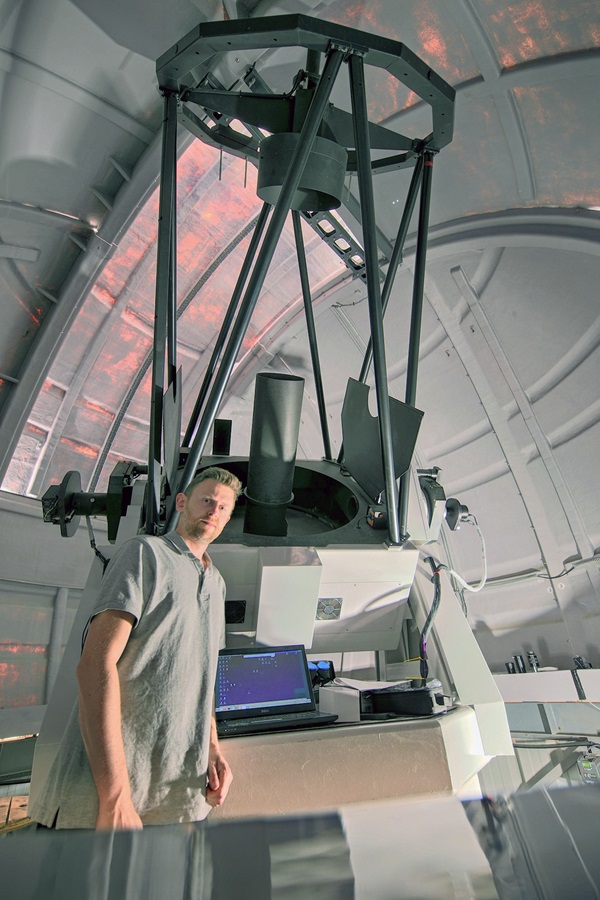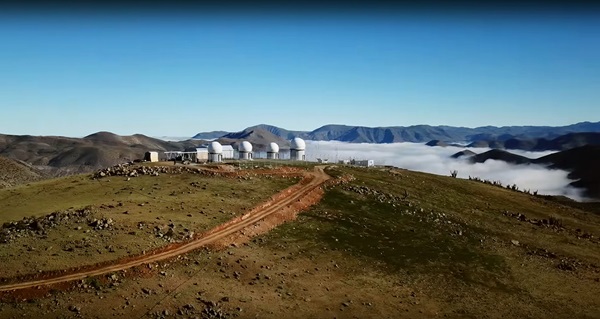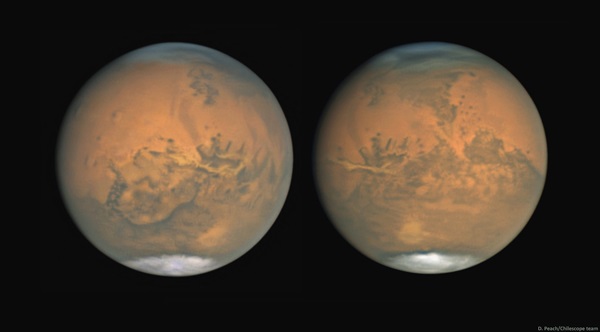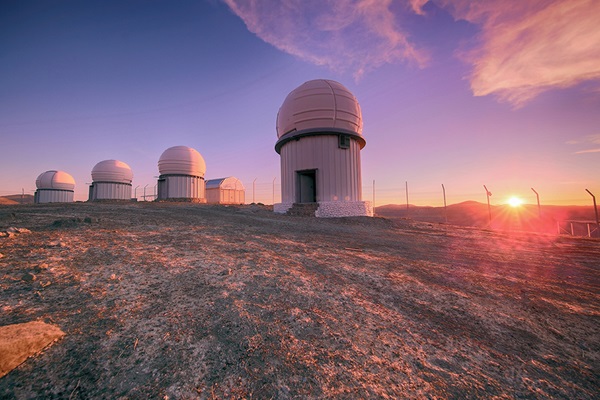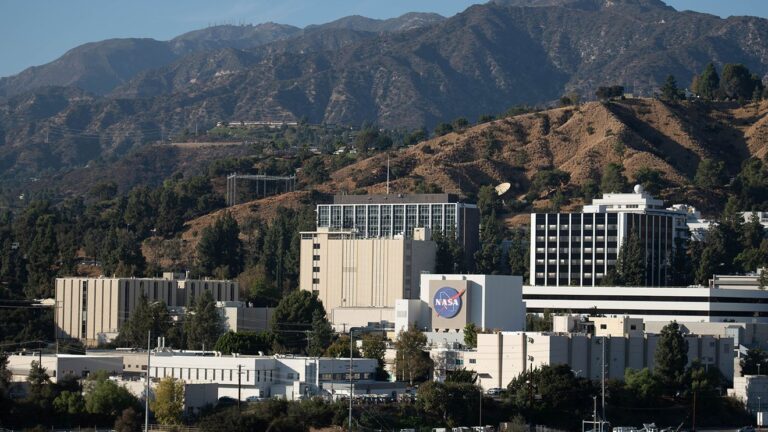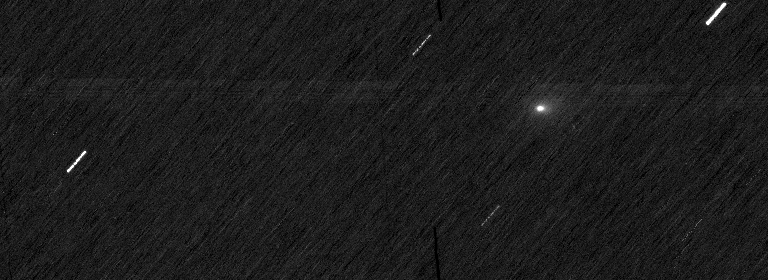Key Takeaways:
I have been a member of the team running — also from afar — planetary imaging sessions for Chilescope customers over the past two years. In late summer 2018, I got the opportunity to actually visit the site in Chile and spend a week there observing and imaging in person. The trip would consist of practical observing, but I also hoped to make improvements to the telescopes and test different cameras and settings, as well as complete other work on site.
Chilescope Observatory is located in the southern part of the Atacama Desert, some 12.5 miles (20 kilometers) southeast of Cerro Pachon (home to the Gemini South Observatory). The mountain upon which the domes are located is actually owned and shared by two observatories: Chilescope and Obstech. While Chilescope offers remote imaging on a pay-per-use basis, Obstech offers remote telescope-hosting services for both professional and private clients. Two large roll-off-roof sheds house a variety of Obstech telescopes, and both observatory staffs collaborate closely to ensure maintenance of the telescopes and the site.
Planning for my visit began in the early summer of 2018. We decided August would be ideal — not only did this month coincide with Mars close to opposition, but it was also near New Moon, so we could fully experience Chile’s dark, transparent skies.
While the schedule for this visit was busy, the opportunity to observe deep-sky targets using the 1-meter telescope was a personal priority. It’s not every day you have the chance to use a large telescope under such a sky, so I made an extensive list of targets I wanted to observe. I also purchased a new 50mm eyepiece. With everything packed, I was ready for the long journey ahead.
Getting to a remote mountaintop in the Atacama was not a simple journey. It involved 14 hours of flying and six more hours of driving. Still, my route from London to Paris to Santiago was straightforward enough, and I even managed a decent amount of sleep on the long flight to Chile. I arrived over the Andes around dawn, which of course made for some spectacular views of the dramatic landscape below. Upon arrival, I was greeted by the owner of Obstech, Vincent Suc, my guide during my stay. But before the long drive from Santiago into the Atacama, I had a meeting arranged with a longtime friend whom I would finally get to see in person for the first time: renowned nightscape photographer Yuri Beletsky, who lives in the city.
After an enjoyable breakfast on a cool winter morning (a dramatic change from the sweltering summer conditions I had left in the UK), we began the long drive to the observatory. As we headed north along the Pacific coast, the landscape gradually changed from trees and grassland to a barren and desolate desert. We arrived on site around sunset, so there was no time to spare. After unpacking and a brief meal, we began observing.
Arrival at the site
Unsurprisingly, the sky was perfectly clear the first night I was on site. As evening twilight progressed, the zodiacal light became increasingly bright — like a sword of light standing up from the horizon. And it remained visible for a long time after the Sun had vanished. As twilight ended, the incredible magnificence of the sky came into view. It was, without a doubt, the most impressive view I have seen in 30 years of observing. The center of the galaxy was at the zenith with the band of the Milky Way stretching from one horizon to the other, showing incredible structure and detail to the naked eye.
After spending some time taking in the unaided views and photographing the sky using my DSLR, I moved into the dome of the 1-meter telescope to prepare for planetary observations. Part of the first night consisted of imaging Mars using the planetary camera fitted to the telescope. It was great to finally be on site imaging with this telescope, having remotely used it so many times over the previous year. We then replaced the planetary camera on the telescope with an eyepiece for a brief session of visual observing before some much-needed rest. After staying awake for more than 30 hours, we went to catch some sleep in the small but comfortable astronomer accommodations on site.
The nights were busy, of course, and the daytime was not much different. Because people are not often on site, it was a great opportunity to test and inspect the 1-meter telescope, while also testing the planetary camera system.
One of the major undertakings during my stay was cleaning the 1-meter scope’s optics, which had become surprisingly dirty due to the dust whipped up by the winds across the mountaintop. This was a two-man task, so Suc and I mixed up the appropriate solutions and carefully cleaned the optics. Even though I have a great deal of experience in cleaning amateur-size scopes, cleaning the optics of such a large instrument (and one that did not belong to me) was a process I took great care in doing. Fortunately, it proved to be a straightforward task — and a successful one. After cleaning, the difference in the telescope mirrors was remarkable.
During our nighttime testing, we noticed that the mirror showed some astigmatism. Upon investigating, we found the clips holding the primary mirror in place were clamping it far too tightly. During the day, we carefully loosed these clips, hoping this might improve the images — and it did. Other duties consisted of installing new filters in the planetary camera’s filter wheel, as well as cleaning all filters. I also performed various maintenance tasks on some of the other telescopes on site.
One particularly fascinating daytime excursion involved visiting a small local school that the observatory helps support. This school is quite unlike any I have ever visited because it consists of a single teacher and just four pupils ranging from 5 to 7 years old. The contrast from a typical western school is quite astonishing and not something I will forget. While isolated and remote, the school (thanks to the observatory) has excellent connections to the outside world, and the children seemed happy and playful. I couldn’t help but wonder what it would be like growing up somewhere like this — so different from my often frantic life back home.
Planetary observations
One of the prime objectives of my visit was to see if we could improve the image quality of the 1-meter telescope. I’m happy to report that we succeeded. Cleaning the optics, loosening the mirror cell clips, and adjusting the camera’s back-focus position yielded the best planetary images obtained with the scope so far. We also tested a few different cameras on it during the week, and we continue to analyze the images we obtained.
Using the telescope for planetary imaging in person was not much different from using it remotely. The only difference was that, on site, we had the full camera preview speed, which made focusing easier.
Unfortunately, some months earlier, a huge planet-encircling dust storm kicked up on Mars. The martian atmosphere was still clearing during my visit, so the views were sadly more subdued then they could have been. Nonetheless, on the best nights I captured fine details and we all enjoyed excellent views. During my stay, I managed to image around two-thirds of the martian surface, which allowed the construction of a detailed planetary map.
I spent limited time imaging the other planets. However, I did get one especially good evening imaging Venus through an ultraviolet filter, which revealed many details in the planet’s upper atmosphere.
Although I am primarily an astroimager, when I found myself under one of the darkest and most transparent skies on the planet with a large-aperture telescope to use, the one thing I really wanted to do was spend time looking at the many celestial wonders above. During the course of the week, I made many observations of objects I had never seen before. I also made a number of sketches for the first time in years. The thing that struck me the most was how vivid the colors of deep-sky objects appeared, especially planetary nebulae. And as a bonus, the superbly accurate go-to system on the telescope made hopping from one object to another simple.
The Emerald Nebula (NGC 6572), a planetary nebula in Ophiuchus, was without doubt the highlight. Through the 1-meter telescope, I not only saw interesting structure inside the nebula, but also the most amazing vivid green-blue color. Looking into the scope was an immediate “wow!” moment. The famous Saturn Nebula (NGC 7009) in Aquarius also showed vivid color and structure, as did the Bug Nebula (NGC 6302) in Scorpius, another highlight with its wonderful detail.
The famous active galaxy Centaurus A (NGC 5128) was a dramatic sight with incredible detail in its dust lanes, which run across the center of the galaxy. Equally enthralling was my observation of the lesser-known Cartwheel Galaxy (PGC 2248) in Sculptor. This remote object is one of the strangest-looking galaxies in the sky, and at 15th magnitude it’s faint through all scopes I’ve used to view it. Upon gazing into the 1-meter telescope, however, I could not only see the core, but the faint tendrils extending from the core to the surrounding ring of material as well. I also spied several of the Cartwheel’s companion galaxies. I could not help but think that the light I was seeing had left its source half a billion years earlier, which made this a memorable observation.
Throughout the nights, I observed many more well-known targets. The famous Tarantula Nebula (30 Doradus) was an incredible sight. The Homunculus Nebula surrounding the star Eta Carinae was equally impressive. I also — for the first time ever — actually saw distinct red color in the Orion Nebula (M42).
All the visual observing sessions were packed. I probably observed more deep-sky targets in this single week than I had in the previous decade, and there were many memorable firsts. During one session, we actually took a break in the middle of the night and had a barbecue on site under the stars — then returned to the dome and continued skygazing.
The week draws to a close
After an action-packed week both day and night, it was finally time to make the long journey home. It had been a successful trip from a working perspective of improving the telescope, and I obtained many high-quality images. This was my second visit to Chile, and again it was a memorable one. It is an amazing country with incredible vistas.
The top memory that I will carry with me is of the deep-sky observing sessions using the 1-meter telescope. It helped remind me, usually just an imager, of the simple pleasures of visually observing through a telescope, albeit a rather large one in this case!
My sincere thanks to Ivan Rubstov and Sergey Pogrebisskiy for making this amazing trip possible. I will surely remember it for the rest of my life

